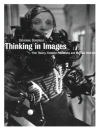This book discusses the figure of Woman in Lars von Trier’s distinctive cinematic productions from 1996 to 2014. It takes the notorious legacy of violence against women in von Trier’s cinema beyond the perceived gender division, elevating the director’s image above being a mere provocateur. By raising fundamental questions about woman, sexuality, and desire, Elbeshlawy shows that Trier’s cinematic Woman is an attempt at creating an image of a genderless subject that is not inhibited by the confines of ideology and culture. But this attempt is perennially ill-fated. And it is this failure that not only fosters viewing enjoyment but also gives the films their political importance, elevating them above both commendations and condemnations of feminist discourse.
Tabella dei contenuti
1. Introduction: The Lacanian Woman and Lars von Trier’s Cinema.- 2. The Danger of the Naive Religious Woman of Breaking the Waves.- 3. Idioterne: Woman as a Proponent of Real Politics.- 4. Dancer in the Dark: Deploying the Siren, Impairing the Sight.- 5. Dogville: Woman as an Ideological Cinematic Tool.- 6. Manderlay: The Gift, Grace’s Desire, and the Collapse of Ideology.- 7. The Deployment of the Impossible Woman in Antichrist.- 8. Besides Melancholia and Beyond Gender: Melancholia.- 9. Conclusion, or, Desire as Law: the Loneliness of Nymphomaniac between Pornography and Narrative.
Circa l’autore
Ahmed Elbeshlawy is an independent scholar and occasional lecturer. He is author of
America in Literature and Film (2011) and has contributed articles to
The Comparatist (2008)
, the forthcoming
Palgrave Handbook to Literature and the City,
female/bodies (2005, 2006),
Scope (2008) and
Sexuality and Culture (2014).












